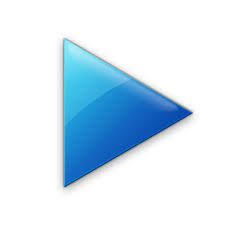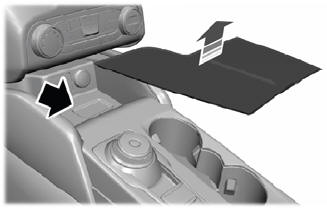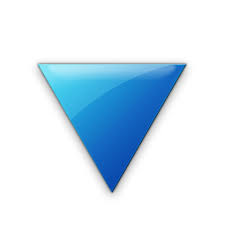Ford Escape: Driveshaft / Diagnosis and Testing - Driveshaft
Symptom Chart(s)
Diagnostics in this manual assume a certain skill level and knowledge of Ford-specific diagnostic practices.
REFER to: Diagnostic Methods (100-00 General Information, Description and Operation).
Symptom Chart: NVH
Symptom Chart
| Condition | Actions |
|---|---|
| Driveline clunk - loud clunk when shifting from REVERSE to DRIVE | GO to Pinpoint Test A |
| Driveline clunk — occurs as the vehicle starts to move forward following a stop | GO to Pinpoint Test B |
| Buzz – buzzing noise is the same at cruise or coast/deceleration | GO to Pinpoint Test C |
| Rumble or Boom – noise occurs at coast/ deceleration, usually driveshaft speed-related and noticeable over a wide range of speeds | GO to Pinpoint Test D |
| Grunting — normally associated with a shudder experienced during acceleration from a complete stop | GO to Pinpoint Test E |
| Driveline shudder – occurs during acceleration from a slow speed or stop | GO to Pinpoint Test F |
| Driveline vibration - occurs at cruising speeds | GO to Pinpoint Test G |
Global Customer Symptom Code (GCSC) Chart
Diagnostics in this manual assume a certain skill level and knowledge of Ford-specific diagnostic practices.
REFER to: Diagnostic Methods (100-00 General Information, Description and Operation).
| Symptom | Action |
|---|---|
| Start/Run/Move > Noise > Moving/Driving > Always | GO to Pinpoint Test A |
| Start/Run/Move > Noise > Moving/Driving > Always | GO to Pinpoint Test B |
| Start/Run/Move > Noise > Moving/Driving > Always | GO to Pinpoint Test C |
| Start/Run/Move > Noise > Moving/Driving > Always | GO to Pinpoint Test D |
| Start/Run/Move > Noise > Moving/Driving > Always | GO to Pinpoint Test E |
| Start/Run/Move > Vibration > Moving/Driving > Intermittent | GO to Pinpoint Test F |
| Start/Run/Move > Vibration > Moving/Driving > Intermittent | GO to Pinpoint Test G |
Pinpoint Tests
 PINPOINT TEST A: DRIVELINE CLUNK- LOUD CLUNK WHEN SHIFTING FROM REVERSE TO DRIVE
PINPOINT TEST A: DRIVELINE CLUNK- LOUD CLUNK WHEN SHIFTING FROM REVERSE TO DRIVE|
Normal Operation and Fault Conditions The driveline system enables the power generated by the engine and transferred through the transmission and, if applicable, transfer case, to place the vehicle in motion. Rotational torque received from the transmission or transfer case is delivered to the front and rear drive axles by way of the driveshafts. The CV joints at the ends of the shafts allow the shafts to rotate smoothly in an allowable angle plane. The rotational torque is introduced into the axle differential which drives the axles/halfshaft. Possible Sources
|
||||
| A1 INSPECT THE DRIVESHAFT CV (CONSTANT VELOCITY) JOINTS FOR WEAR OR DAMAGE | ||||
Was any damage found?
|
 PINPOINT TEST B: DRIVELINE CLUNK- OCCURS AS THE VEHICLE STARTS TO MOVE FORWARD FOLLOWING A STOP
PINPOINT TEST B: DRIVELINE CLUNK- OCCURS AS THE VEHICLE STARTS TO MOVE FORWARD FOLLOWING A STOP|
Normal Operation and Fault Conditions The driveline system enables the power generated by the engine and transferred through the transmission and, if applicable, transfer case, to place the vehicle in motion. Rotational torque received from the transmission or transfer case is delivered to the front and rear drive axles by way of the driveshafts. The CV joints at the ends of the shafts allow the shafts to rotate smoothly in an allowable angle plane. The rotational torque is introduced into the axle differential which drives the axles/halfshaft. Possible Sources
|
||||
| B1 INSPECT THE DRIVESHAFT CV (CONSTANT VELOCITY) JOINT FOR A WORN CONDITION | ||||
Was any damage found?
|
 PINPOINT TEST C: BUZZ – BUZZING NOISE IS THE SAME AT CRUISE OR COAST/DECELERATION
PINPOINT TEST C: BUZZ – BUZZING NOISE IS THE SAME AT CRUISE OR COAST/DECELERATION|
Normal Operation and Fault Conditions The driveline system enables the power generated by the engine and transferred through the transmission and, if applicable, transfer case, to place the vehicle in motion. Rotational torque received from the transmission or transfer case is delivered to the front and rear drive axles by way of the driveshafts. The CV joints at the ends of the shafts allow the shafts to rotate smoothly in an allowable angle plane. The rotational torque is introduced into the axle differential which drives the axles/halfshaft. Possible Sources
|
||||
| C1 CHECK DRIVELINE ANGLES | ||||
Are the driveline angles incorrect?
|
 PINPOINT
TEST D: RUMBLE OR BOOM – NOISE OCCURS AT COAST/ DECELERATION, USUALLY
DRIVESHAFT SPEED-RELATED AND NOTICEABLE OVER A WIDE RANGE OF SPEEDS
PINPOINT
TEST D: RUMBLE OR BOOM – NOISE OCCURS AT COAST/ DECELERATION, USUALLY
DRIVESHAFT SPEED-RELATED AND NOTICEABLE OVER A WIDE RANGE OF SPEEDS |
Normal Operation and Fault Conditions The driveline system enables the power generated by the engine and transferred through the transmission and, if applicable, transfer case, to place the vehicle in motion. Rotational torque received from the transmission or transfer case is delivered to the front and rear drive axles by way of the driveshafts. The CV joints at the ends of the shafts allow the shafts to rotate smoothly in an allowable angle plane. The rotational torque is introduced into the axle differential which drives the axles/halfshaft. Possible Sources
|
||||
| D1 CHECK THE DRIVESHAFT FOR DAMAGE, MISSING WEIGHTS OR UNDERCOATING | ||||
Was the driveshaft damaged or out of balance?
|
 PINPOINT TEST E: GRUNTING- NORMALLY ASSOCIATED WITH A SHUDDER EXPERIENCED DURING ACCELERATION FROM A COMPLETE STOP
PINPOINT TEST E: GRUNTING- NORMALLY ASSOCIATED WITH A SHUDDER EXPERIENCED DURING ACCELERATION FROM A COMPLETE STOP|
Normal Operation and Fault Conditions The driveline system enables the power generated by the engine and transferred through the transmission and, if applicable, transfer case, to place the vehicle in motion. Rotational torque received from the transmission or transfer case is delivered to the front and rear drive axles by way of the driveshafts. The CV joints at the ends of the shafts allow the shafts to rotate smoothly in an allowable angle plane. The rotational torque is introduced into the axle differential which drives the axles/halfshaft. Possible Sources
|
||||
| E1 INSPECT THE DRIVESHAFT CV (CONSTANT VELOCITY) JOINT FOR A BINDING | ||||
Was the driveshaft CV joint binding found ?
|
 PINPOINT TEST F: DRIVELINE SHUDDER- OCCURS DURING ACCELERATION FROM A SLOW SPEED OR STOP
PINPOINT TEST F: DRIVELINE SHUDDER- OCCURS DURING ACCELERATION FROM A SLOW SPEED OR STOP|
Normal Operation and Fault Conditions The driveline system enables the power generated by the engine and transferred through the transmission and, if applicable, transfer case, to place the vehicle in motion. Rotational torque received from the transmission or transfer case is delivered to the front and rear drive axles by way of the driveshafts. The CV joints at the ends of the shafts allow the shafts to rotate smoothly in an allowable angle plane. The rotational torque is introduced into the axle differential which drives the axles/halfshaft. Possible Sources
|
||||
| F1 CHECK DRIVELINE ANGLES | ||||
Are the driveline angles incorrect?
|
||||
| F2 INSPECT THE DRIVESHAFT CV (CONSTANT VELOCITY) JOINTS AND COUPLING SHAFT FOR WEAR OR DAMAGE | ||||
Was wear or damage found?
|
 PINPOINT TEST G: DRIVELINE VIBRATION - OCCURS AT CRUISING SPEEDS
PINPOINT TEST G: DRIVELINE VIBRATION - OCCURS AT CRUISING SPEEDS |
Normal Operation and Fault Conditions The driveline system enables the power generated by the engine and transferred through the transmission and, if applicable, transfer case, to place the vehicle in motion. Rotational torque received from the transmission or transfer case is delivered to the front and rear drive axles by way of the driveshafts. The CV joints at the ends of the shafts allow the shafts to rotate smoothly in an allowable angle plane. The rotational torque is introduced into the axle differential which drives the axles/halfshaft. Possible Sources
|
||||
| G1 CHECK THE DRIVESHAFT CENTER BEARING INSULATOR FOR DAMAGE OR WEAR | ||||
Was wear or damage found?
|
||||
| G2 CHECK FOR LOOSE AXLE PINION FLANGE BOLTS | ||||
Are any bolts loose?
|
||||
| G3 CHECK FOR AXLE PINION FLANGE RUNOUT | ||||
Are the runout correct?
|
||||
| G4 CHECK THE DRIVESHAFT FOR DAMAGE, MISSING WEIGHTS OR UNDERCOATING | ||||
Was a system fault found ?
|
||||
| G5 INSPECT THE DRIVESHAFT CV (CONSTANT VELOCITY) JOINTS FOR WEAR OR DAMAGE | ||||
Was wear or damage found?
|
||||
| G6 CHECK FOR DRIVESHAFT RUNOUT | ||||
Are the runout correct?
|
||||
| G7 CHECK DRIVELINE ANGLES | ||||
Are the driveline angles incorrect?
|
 Specifications
Specifications
Item
1.5L EcoBoost
2.0L EcoBoost
2.5L Duratec HEV
Driveshaft runout
0.6 mm (0.024 in)
0...
 General Procedures - Driveshaft Angle Measurement
General Procedures - Driveshaft Angle Measurement
Check
NOTE:
Prior to checking driveline angularity, inspect the U-joints for correct operation.
NOTE:
An incorrect driveline angle can cause a vibration or shudder...
Other information:
Ford Escape 2020-2025 Service Manual: Removal and Installation - Exterior Front Door Handle
Removal NOTE: LH (left-hand) side shown, RH (right-hand) side similar. NOTE: Removal steps in this procedure may contain installation details. Vehicles with passive entry Remove the front door window regulator and motor. Refer to: Front Door Window Regulator and Motor (501-11 Glass, Frames and Mechanisms, Removal and Installation)...
Ford Escape 2020-2025 Service Manual: Diagnosis and Testing - Exhaust System
Global Customer Symptom Code (GCSC) Chart Diagnostics in this manual assume a certain skill level and knowledge of Ford-specific diagnostic practices. REFER to: Diagnostic Methods (100-00 General Information, Description and Operation). Symptom Action Fit/Finish/Body > Paint/Finish > Exhaust > Corrosion/Rust GO to Pinpoint Test C Start/Run/Move > Noise > Exh..
Categories
- Manuals Home
- 4th Generation Ford Escape Owners Manual
- 4th Generation Ford Escape Service Manual
- Accessing the Trip Computer. Resetting the Trip Computer
- Symbols Glossary
- Fuel Quality
- New on site
- Most important about car
Master Access Code
What Is the Master Access Code
The master access code is a factory-set five-digit entry code. You can operate the keypad with the master access code at any time. The master access code is on the owner’s wallet card in the glove box and is available from an authorized dealer.
Displaying the Master Access Code
To display the factory-set code in the information display:


 PINPOINT TEST A: DRIVELINE CLUNK- LOUD CLUNK WHEN SHIFTING FROM REVERSE TO DRIVE
PINPOINT TEST A: DRIVELINE CLUNK- LOUD CLUNK WHEN SHIFTING FROM REVERSE TO DRIVE